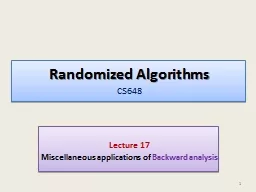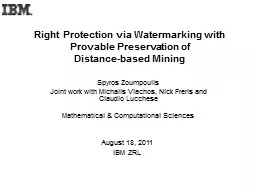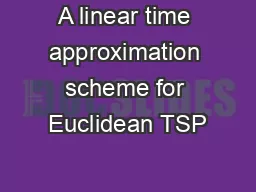PPT-1 An Associative Program for the MST Problem using
Author : mitsue-stanley | Published Date : 2020-01-13
1 An Associative Program for the MST Problem using ClearSpeed Hassan AL Maksousy halmaksokentedu 2 Graph used for Data Structure Figure 6 in Potter Baker et al a
Presentation Embed Code
Download Presentation
Download Presentation The PPT/PDF document "1 An Associative Program for the MST Pro..." is the property of its rightful owner. Permission is granted to download and print the materials on this website for personal, non-commercial use only, and to display it on your personal computer provided you do not modify the materials and that you retain all copyright notices contained in the materials. By downloading content from our website, you accept the terms of this agreement.
1 An Associative Program for the MST Problem using: Transcript
Download Rules Of Document
"1 An Associative Program for the MST Problem using"The content belongs to its owner. You may download and print it for personal use, without modification, and keep all copyright notices. By downloading, you agree to these terms.
Related Documents














